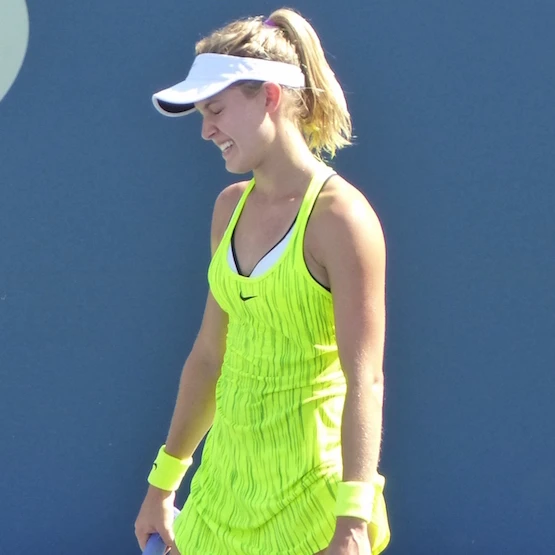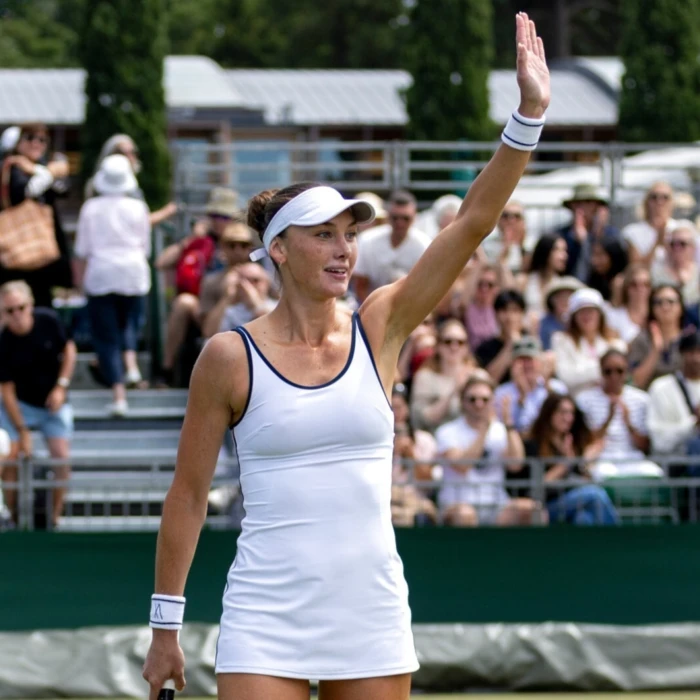The answer is yes. It’s an integral part of the game.
That question comes from it getting tiresome to watch matches on television with it seeming like commentators come up with criticisms of every single unforced error. Usually they say things like, “the player should be hitting to bigger targets” or “putting more spin on the ball.”
Sometimes a player just misses a shot, the same way sometimes a player makes a shot. For example, a player belts a forehand down-the-line over the high part of the net and it lands right in the corner. Great shot, right?
Now the player hits the same shot and lands an inch or two out and suddenly he or she should have known it was too risky and should have – guess what? – hit to a bigger target or used more spin.
Maybe trying to find an explanation for every missed shot is human nature, and sometimes there are good ones – the player had lazy footwork, the player took his/her eye off the ball, the player let up anticipating he or she was about to win the point.
But tennis isn’t like golf or bowling, sports where players have more control over their own destinies and don’t directly confront an opponent who affects what they do. In tennis, roughly 50 per cent of what happens is related to the person on the other side of the net. Players can miss shots because they’re better than the opponent but are over-confident and not as focused as they should be – and they can also miss shots because they know the opponent is superior and feel both the pressure of the actual shots coming at them as well as the psychological pressure of knowing the person on the other side of the net is better.
[caption id="attachment_61849" align="alignnone" width="1024"] Photo: Peter Figura[/caption]
Photo: Peter Figura[/caption]
Missing shots can be a signal, a gut check that turns into a positive. Rather than play tentatively and not hit out on the ball, players can go for their shots with the idea that eventually they will find their timing. Missing the ball long often feels better than collapsing a shot into the net. Just a little re-calibration and players may start to find the range and keep those balls in the court.
They also have to trust in their shots and believe that they will be able to make them when they matter most. Tennis performance is often a mystery and going for shots provides a barometer of where a player is at on a given day. He or she may miss a few but by finally making some build the confidence required to play better as the match progresses. Conversely, a player may pull back a bit and just keep the ball in play before gradually stepping up and playing more aggressively.
The former approach is harder for the attacking player because he or she is doing the initiating in the rallies. The counter-puncher/retriever/pusher type of player has the easier task of just reacting and steadily getting the ball back to put the onus on the opponent to come up with good enough shots to win points. Despite unforced errors, aggressive players usually keep ‘going for it’ despite misses in the belief that their shots will eventually come good and pay off.
Two tennis old-timers had philosophies that very much resembled each other. Perry Jones, the czar of California tennis from the 1940s until the 1960s, in the days of Pancho Gonzales, Billie Jean King and Stan Smith et al, was a former American Davis Cup captain. One of his basic tenets was “hit and don’t think.”
Harry Hopman, the legendary Australian Davis Cup captain in the 1950s and 1960s, had a variation on the Jones mantra. He would tell players such as Ken Rosewall, Rod Laver and John Newcombe to simply “hit for the lines.”

In tennis matches, players go through highs and lows, arousals and lulls, and they’re the reasons for misses as much as purely technical issues. One example is how the first set of a match is often a tense, nervous affair with both players not playing their best because they sense the importance of winning it. Frequently, the second set is more liberated tennis because one or both settle down and is able to hit out more easily. Similar is the seesaw nature of sets with one player losing the preceding set and then often taking control of the next one.
The explanation for the misses in those first sets, or the flip-flopping in subsequent sets, has more to do with the mental aspect of the game than the fine points of stroke production.
Players miss shots for a host of reasons and it sometimes makes sense to simply accept that – it’s an organic part of tennis. Trying to find a reason for every unforced error is a mug’s game. The importance of the occasion, fatigue, pressure, pre-match factors, fitness and a ton of other variables affect why mistakes are made on the tennis court. But each individual miss and the reasons for them are not always the most important thing – more important is having the proper mental mindset and getting on with the next point.
From the commentary box, some people can’t see the forest for the trees, and miss the point about what’s actually happening down on the court.
Vasek: Positive signs

Vasek Pospisil advanced to the second round of an ATP event for just the eighth time this season when he defeated Ivo Karlovic 7-6(5), 6-4 in the first round of the Shanghai Rolex Masters on Monday. Each player had only one break point in the match with Pospisil converting in the third game of the second set on his way to improving his record to 3-1 against the No. 20-ranked Croat.
Now ranked No. 131, Pospisil won two rounds in the qualifying – defeating Adrian Mannarino 7-6(0), 6-7(3), 6-3 before beating Inigo Cervantes (the head at the bottom of the picture above from the practice courts at Wimbledon last June) 6-4, 4-6, 6-4. This marks the first time (including qualifying) that Pospisil has won three matches in a row since he reached the semifinals of the ATP 250 event in Valencia, Spain last October.
In the second round he faces Grigor Dimitrov. The No. 18-ranked Bulgarian leads their H2H 3-0, winning their last meeting 7-6(4), 7-6(5) in the second round in Cincinnati last year.
Milos Raonic, assuming the right ankle ligament tear that forced him to withdraw from the Beijing semifinals last week has healed, is entered in Shanghai and seeded No. 5. On Wednesday he’s scheduled to meet No. 37-ranked Paolo Lorenzi. It’s a first encounter for Raonic against the 34-year-old Italian.
On the WTA tour, Genie Bouchard returns to action this week for the first time since losing in the second round of the National Bank Cup in Quebec City last month. On Tuesday she plays No. 121-ranked Anett Kontaveit of Estonia, 20. It’s their first meeting.
Bouchard, now ranked No. 45, took a pass on the Asian swing and is returning to action after 26 days off the tour.
Tweener silly season

This autumn seems to be showcasing, more than usual, the trick shots of tennis. Maybe at the tail end of the season the players are more relaxed and able to have a little more fun on the courts.
Nick Kyrgios is indisputably one of the great talents in the sport today. Below are two examples of his creative abilities on display during the Japan Open last week in Tokyo – an ATP 500 event which he won.
From the vault
[caption id="attachment_61850" align="alignleft" width="149"] Click to enlarge photo.[/caption]
Click to enlarge photo.[/caption]
The great Steffi Graf, winner of 22 Grand Slam singles titles, is 47 years old, the wife of Andre Agassi and the mother of two children – soon to be 15-year-old (Oct. 26) Jaden Gil and 13-year-old Jaz Elle.
In her younger days, there were other men in Graf’s life – including former German player Alexander Mronz – as shown in the item here from June 1989.







